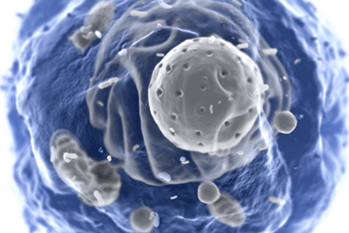
 The importance of cells in life science research cannot be overstated. From their vital role in vaccine development, biologics production, and microbial growth to their use as models in cancer research, drug discovery, and toxicology, human and animal cells have been essential for scientific progress. Because of the invaluable nature and numerous applications of these research materials, it is critical that they are handled carefully to not only avoid contamination but to protect human safety.
The importance of cells in life science research cannot be overstated. From their vital role in vaccine development, biologics production, and microbial growth to their use as models in cancer research, drug discovery, and toxicology, human and animal cells have been essential for scientific progress. Because of the invaluable nature and numerous applications of these research materials, it is critical that they are handled carefully to not only avoid contamination but to protect human safety.
When working with cell cultures, there are various risks that can affect the safety of the cultures themselves or the researcher working with them. A common biohazard is the presence of intracellular microorganisms, which can be introduced through deliberate infection or from infected donor tissues. Intracellular pathogens, such as viruses or certain species of bacteria and protozoa, require host cell machinery to survive and complete their life cycle. As such, many scientists rely on cell culture to cultivate these pathogens in vitro to enable research on the organism’s lifecycle, transmission dynamics, and pathogenicity. However, the need for host cell machinery can also mean that cells harvested from human tissues could be at risk for infection by harmful pathogens such as herpes virus, human papillomavirus, hepatitis virus, or human immunodeficiency virus. In this latter situation, the unknown presence of contamination can pose a serious risk to human health—particularly if the cells are shedding active infectious particles—and it can result in cell structural changes or genomic modifications that can adversely affect research outcomes.
Discover Best Practices for Cell Culture
Cell cultures may also become exposed to microorganisms through accidental contamination. Here, contamination of cells in culture can arise from many sources, including reagents, supplies such as pipettes and culture vessels, equipment such as tissue culture hoods and incubators, and laboratory personnel. Bacteria, yeasts, and fungi are common contaminants of cell culture that are often easily spotted from the rapid onset of turbidity, a change to media color, and cellular damage. Contamination with mycoplasma, however, can be more difficult to detect. These bacterial strains frequently go unnoticed for numerous cell passages and can affect almost every aspect of cell physiology. In each of these cases, microbial contamination is not only damaging if not fatal to the cell culture, it can also pose a biosafety concern to the researcher if the contaminating species is a human pathogen.
Resources for cell safety

Mycoplasma contamination
Mycoplasma constitutes a serious concern for cell culturists as they are a common cause of cell line contamination and frequently go unnoticed due to the lack of obvious symptoms. These silent contaminants can affect almost all aspects of cell physiology, which can damage the quality of your research materials and compromise the credibility of your data. Explore essential tips for protecting your cell cultures.
Protect your cells
Cellular cross-contamination
Cross-contamination of one cell line with another can sometimes lead to the replacement of the original cell with the contaminant, particularly when the contaminant grows faster than the original line. Discover how authentication via short tandem repeat profiling, karyotyping, and CO1 barcoding can help ensure you are working with the right culture.
Explore authentication methodsAnimal Cell Culture Guide
Cell culture contamination can arise from many sources, including other cell lines, reagents, supplies, equipment, and laboratory personnel. While the potential for contamination is constant, the risk can be reduced or eliminated by proper precautions. Read our culture guide to access the essential information you need to keep your cell cultures safe.
Find tipsThe need for precautions when experimenting with cells in culture depends upon the source and nature of the biological material, the experimental procedure, and the laboratory/containment conditions. Since every situation is different, the risks need to be identified and appropriate precautions need to be taken before any work begins. Where infection with human pathogens is known or suspected, materials should be carefully handled at a containment level appropriate for the infectious agent. The current publication of the Biosafety in Microbiological and Biomedical Laboratories from the U.S. Department of Health and Human Services, Centers for Disease Control and Prevention, and National Institutes for Health provides up-to-date laboratory safety and containment recommendations for the safe conduct of work in biomedical and clinical laboratories.
The spread of these microorganisms and the incidence of contamination can also be minimized by using proper precautions and aseptic technique. Some best practices include the use of reagents of known quality and sterility, quarantining new cell lines until they are tested to be free from contamination, performing routine maintenance and cleaning of all equipment, and properly training cell culture personnel. It is also prudent to treat all mammalian cell lines as potentially hazardous and work with them under BSL-2 practices, even if they are classified as BSL-1.
At ATCC, we are committed to providing the authenticated cell cultures, trustworthy media and reagents, reliable information, and hands-on training needed to support safety in the laboratory and reproducibility in your research. Explore our resources below to learn more.
